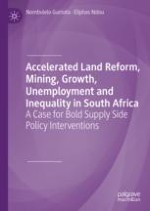2019 | OriginalPaper | Buchkapitel
8. What Is the Nature of the Output-Employment-Unemployment Nexus in South Africa? Evidence from Various Approaches to Okun’s Law
verfasst von : Nombulelo Gumata, Eliphas Ndou
Erschienen in: Accelerated Land Reform, Mining, Growth, Unemployment and Inequality in South Africa
Aktivieren Sie unsere intelligente Suche, um passende Fachinhalte oder Patente zu finden.
Wählen Sie Textabschnitte aus um mit Künstlicher Intelligenz passenden Patente zu finden. powered by
Markieren Sie Textabschnitte, um KI-gestützt weitere passende Inhalte zu finden. powered by
